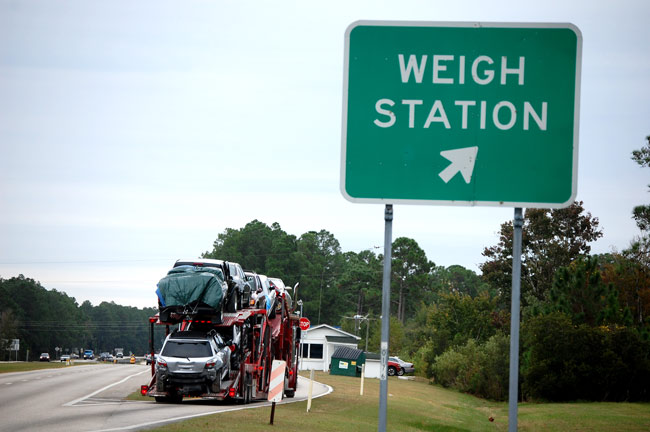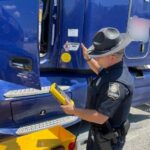The duration of a weigh station inspection can vary greatly, with some inspections taking as little as 30 minutes while others can last up to 10 hours if the driver receives a serious violation that results in them being taken out of service.
Not only does receiving a violation cost drivers time, but it can also come with financial penalties and have negative impacts on their Pre-Employment Screening Program (PSP) report. This can potentially make it harder for the driver to secure future employment with another carrier.
However, passing a weigh station inspection can be made simple by following some tips, according to Robert Kaferle and Brian Runnels, both of whom are experienced in the field as Vice Presidents of Safety at Reliance Partners. They draw on their extensive knowledge from their years of experience as drivers and safety officers to provide guidance for successful weigh station inspections.
At the end of the day, most violations can be prevented by drivers simply following the rules. One of the most straightforward and effective ways to ensure a successful weigh station inspection is to simply comply with all regulations while at the scale.
Despite its apparent simplicity, simple regulations are often violated at weigh stations because drivers may become distracted by tasks such as collecting their paperwork and speaking with law enforcement officers. This unintentional breaking of rules can occur due to the driver’s focus on these activities.
“It’s as simple as keeping your hands on the steering wheel until the officer approaches, keeping your prescription glasses and seat belt on so the officer can see. Then, if you need to take off your seatbelt or remove your prescription glasses to read paperwork, you should verbally tell the officer what you’re going to do,” Kaferle said.
Inspections are categorized into six levels, with Level 3 being the most common for drivers to experience. According to the Commercial Vehicle Safety Alliance, a Level 3 inspection focuses on checking the driver’s license, medical certificate, skill performance evaluation certificate, record of duty status, hours of service, seat belt usage, vehicle inspection reports, and the identification and status of the carrier.
Drivers should be mindful of breaking form and manner regulations, which can be easily overlooked but also easily prevented. Such violations can include forgetting to include a bill of lading number on logs, failing to include tractor and trailer numbers, and not accounting for unclaimed driving time. These can be easily avoided if drivers are mindful of these regulations.
Such form and manner violations may raise red flags and result in more thorough Level 2 (walk-around) or Level 1 (full) inspections.
“Eliminating simple things will put you in a better position to successfully get through an inspection. If they do a Level 3 and there’s nothing there, then they may not do a Level 2 or a Level 1 inspection,” Kaferle said.
Aside from following regulations, keeping the truck in good condition and free of any mechanical issues can help prevent inspections from occurring in the first place. A well-maintained, clean truck is less likely to attract attention and trigger an inspection.
“Don’t let trash build up on the dash and don’t have broken pieces of equipment. Visible disorganization could signal to an officer that there may be other potential issues with the truck,” Runnels noted.
To be fully prepared, however, preparation should begin well before reaching the weigh station. This requires taking personal responsibility. A driver should not have to rely on memory to recall their violation and crash history. Kaferle suggests that drivers request a PSP report annually to be certain about the information that is available to view.
PSP reports contain the last three years of roadside inspections and five years of crash history.
“As a driver, you make your living off your license to drive a tractor-trailer, so it’s critical to make sure it’s in a good standing,” Kaferle said.
Drivers should make sure they have all required documentation in their vehicle. It is advisable for drivers to carry any official correspondence or documents from the state that pertain to any changes to their licenses, such as results from yearly physical exams.
“If you do get pulled over and the officer says, for example, ‘the state doesn’t have a copy of your current medical card,’ you can show them the letter that says it does,” Kaferle said.
Lastly, it’s important for drivers to address any other unrelated matters, especially any unresolved legal issues, as they may cause problems in the future.
“We see a ton of violations for drivers that have their CDL suspended for non-safety-related issues and many times that’s something to do with a court — whether it’s child support or fines. The very first thing they’ll go after is the driver’s license,” Runnels said.
Additionally, drivers should be knowledgeable about their employer’s Inspection Selection System (ISS) rating, as carriers with higher ISS scores are more likely to be selected for inspections.
For carriers, Runnels offers this advice: “Once they start pulling more and more of your trucks, there are more opportunities for violations to be found and you get into a pattern that makes it difficult to get out of. Make sure your drivers are doing pre-trips, that their logs are in order and they’re doing loads legally. That goes a long way of keeping everyone out of the crosshairs.”





